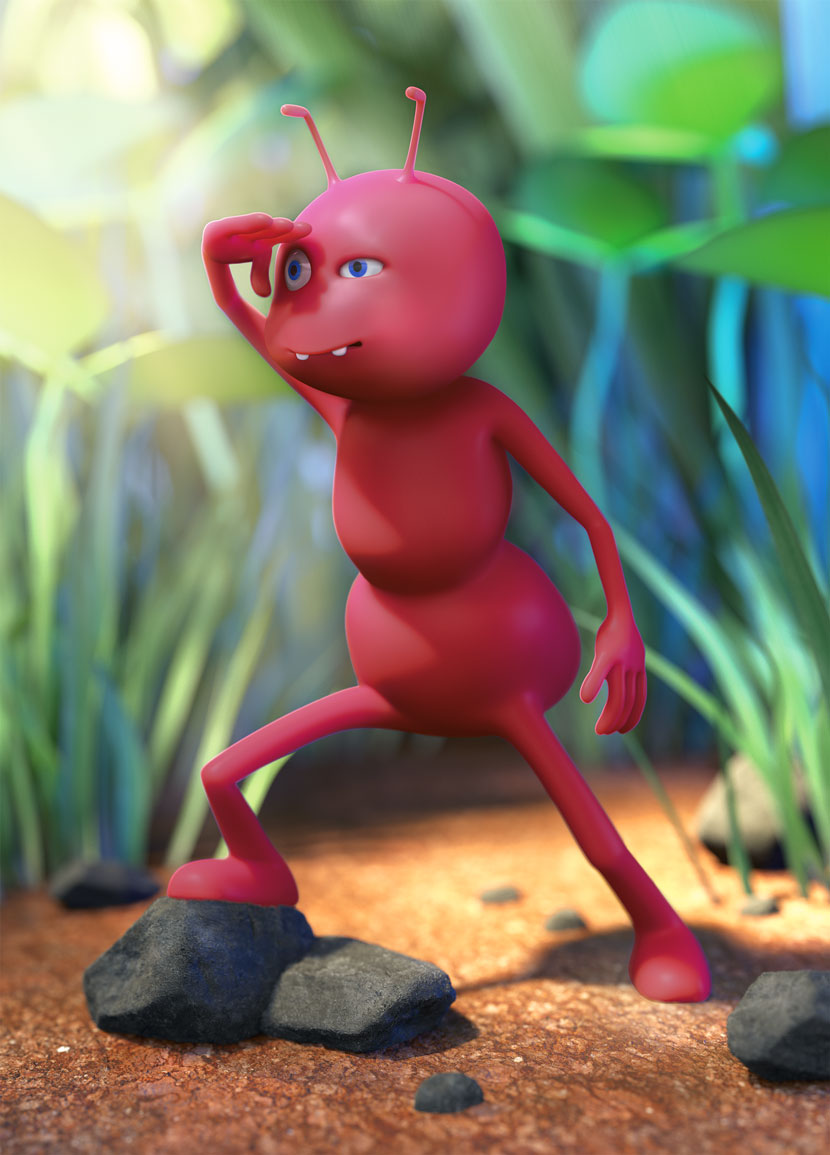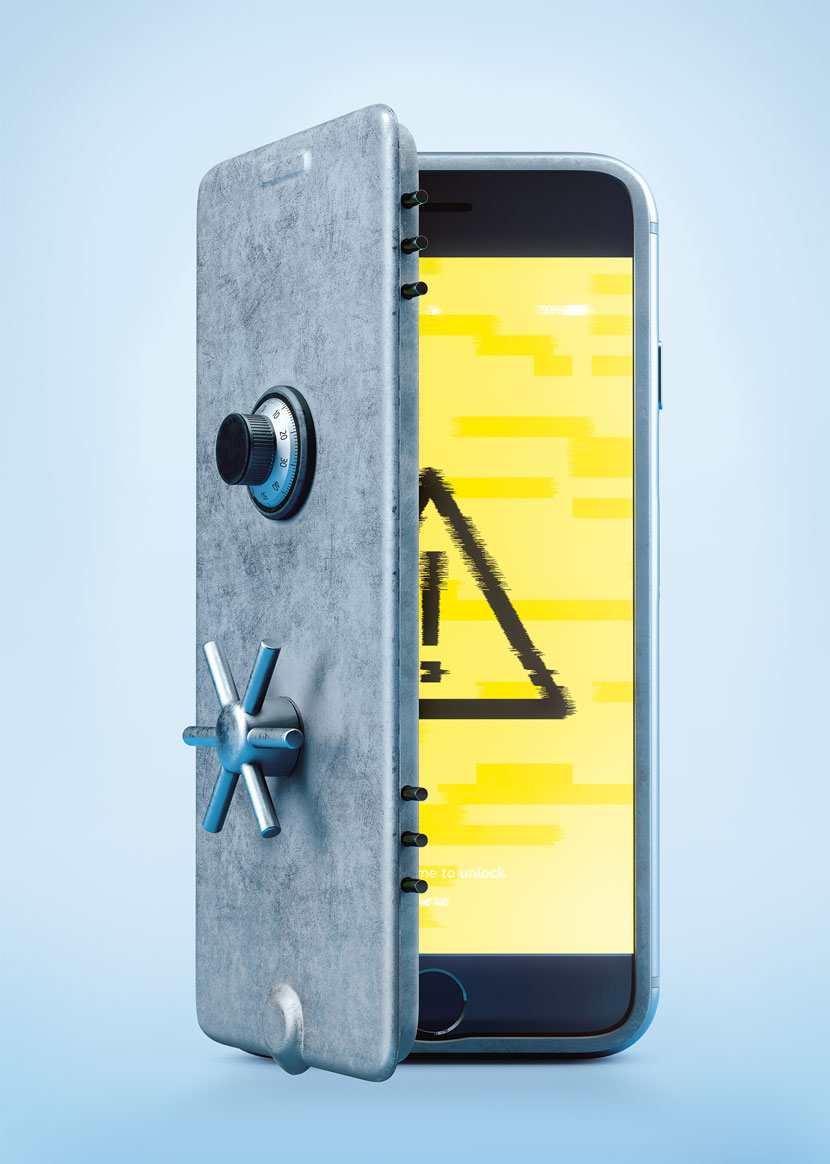Thursday, November 15th, 2018 by Julian Karsunky

Language is not limited to words and a picture, as the saying goes, is worth a thousand of them. Visual design is a prime example of non-verbal communication and an integral part of our daily lives. But how does it work, exactly? In this month’s ArtWanted! feature, Swiss 3D generalist Jörg Patrias helps us explore the grammar of successful visual design from a commercial point of view.
Continue reading to find out how CGI artists such as Jörg translate ideas and shape the conversation between companies and audiences.
 Key visual of a chocolate container.
Key visual of a chocolate container.
Hello Jörg, thanks for taking the time. To start things off, please introduce yourself to our readers!
Hi everybody, my name is Jörg Patrias, I’m a 44 years old 3D generalist from Zurich, Switzerland. I am self-employed and I work for various clients, agencies and publishers. My company is called clarity.
What training or education do you have?
I have no formal education in arts or 3D. I am completely self-taught and have learned most of it by exploring various 2D and 3D applications. In the early days of computer graphics, it was really hard to find tutorials and trainings, so your best shot was to just jump in and hit the buttons. Later, I learned the basic principles of art and design from studying the works of others and, of course, from books. Finally, I’ve had the pleasure to work with and learn a lot from great colleagues. It’s an ongoing process, I still learn new things all the time.
Do you recall when and how you first consciously encountered CGI?
Yes of course, the memory is still very vivid. Two people were influential to me: First of all, my father, who was fascinated by computers. Through the years, he gave me access to a C64, an Amiga 500 and later even a Wacom Tablet and PC. One of my early memories is of this software called Deluxe Paint and long Sunday afternoons spent playing and painting with it as a child. Later on, when I was about 20, my very good friend Michael Meli introduced me to the world of 3D. He showed me the now discontinued trueSpace and the 4.0 version of Lightwave. It was indeed a fascinating time and the moment I saw what you could do with these applications, I was hooked instantly. Our work looked like crap, but we were addicted.
When did you decide to pursuit a professional career as a 3D artist?
It kind of just happened. I worked as a graphic designer in the field of events, fairs and retail design. Over time, I created more and more 3D visualizations to sell our ideas to the customer. From this point on, I’ve been working with Cinema 4D.
 Jörg is quite fond of cute character designs, such as this ant on the lookout.
Jörg is quite fond of cute character designs, such as this ant on the lookout.
Can you tell us more about clarity, the company’s history, its field of work and general philosophy?
Sure. I founded clarity in 2015 after I got bored doing retail and event design day in and out. Although I still loved this kind of work, I wanted more variety. clarity is a one man company with some support from freelancers from time to time. clarity is all about the project at hand, meaning I don’t have a signature style which I force upon clients. I like clean infographics as well as cute character designs and studio shots for CGI ads.
What services does your company provide?
All kinds of 3D work, print as well as animation.
Is there a specific design philosophy that clarity adheres to? What inspires you as a 3D artist?
I try to find the right design language for each project and client. I often put in more hours than I can bill, because my own expectations are rather high. Since I’m self-employed, fortunately I have no boss telling me to rush things to an end. I’m inspired by a lot of work out there. I mean, look at the huge amount of top quality work flooding Instagram, ArtStation and so on. It’s crazy good! I love classic art as well as movies, comics, graffiti and concept art. Some of my heroes are William Turner, Syd Mead, Moebius, Enki Bilal and Ralph McQuarrie.
According to your website, clarity stands for “clear visual communication”. Could you elaborate on this tagline?
In the end, it’s not art, it’s graphic design with a direct purpose. And the design has to work without explanation. The design has to speak to the consumer, so I always make sure to adapt my style in a way suitable for the target audience.
 |
 |
Visualization for a bakery.
What are the decisive factors to successfully communicate through purely visual means?
First of all, I have to fully understand the product. Since my clients usually are the experts in their specific field, I just listen carefully. Then I go back and work on the solution tailored for their needs. Sympathy is also a key factor: We speak about colors, the feeling the work has to convey, shapes and similar design aspects. All of these things are abstract to a certain degree and – in the end – boil down to interpretation. At this point, some form of mutual understanding can guarantee satisfactory end results. This whole process can’t work very well if you don’t have a good connection to the client and vice versa.
How much does the medium influence this process? What are the main benefits and the limitations of 3D artwork in this regard?
Unlike paint on a canvas, 3D never dries. You can revisit and change the work as often as you like. You can gradually create the perfect picture, without having to start all over time and time again. You can experiment. At the same time, I feel like the endless possibilities can also be a major downside. You might try to adjust the camera angle just slightly and end up with five new cameras in your scene instead, having a hard time picking the best one. This can turn into a nightmare very easily. You have to let it go eventually.
Typically, what does your workflow look like when working with a client?
When I get an inquiry by phone or email, I try to meet up with the client as soon as possible. I listen and try to understand the specific needs. Usually, I make some suggestions and present general possibilities, but for sketches and drafts, I like to take some days before I get back to the client. This way I have the time I need to reflect on my ideas and do some style sheets.
 Key visual on data security.
Key visual on data security.
Let’s talk about your work in more detail. What are some of your personal career highlights or projects that you are particularly fond of that you were involved in in the past that?
Very difficult to tell. I like the variety and new challenges get thrown at me all the time. It never gets old.
Looking through your portfolio, I’ve noticed you created several illustrations for editorials and similar pieces. How does this work differ from conventional jobs or commissions?
It’s different in so far as this sort of work sometimes has a deeper meaning or message and can even get political. While infographics or product shots just have to be clear, understandable and look beautiful, there’s something more to communicate when it comes to editorials.
Generally speaking, how important is creative expression to you as part of your job as a 3D artist? How do you balance your own artistic vision with the wishes of your clients?
Helping a client tell his or her story is quite satisfying to me. When a client gives me some more room to express myself, that’s just the icing on the cake. The best part of being self-employed is that I can use the time in between jobs to work on my personal pieces and express my own style and message. So I am very happy with the overall situation.
 This tasty poster, one of Jörg’s personal projects for a local food festival, was done in collaboration with Arthur Danielsson.
This tasty poster, one of Jörg’s personal projects for a local food festival, was done in collaboration with Arthur Danielsson.
What software do you usually work with? Are there any plug-ins you find particularly helpful?
I mostly use Cinema 4D with V-Ray, though lately I’ve been using Corona more and more. Corona is still in beta, but it’s a beautiful render engine nonetheless and very easy to set up.
I try not to depend on too many plug-ins, but if it helps to get the job done quicker or better it’s an easy decision. I love X-Particles, but I wish I had more time to fully explore it. I also use HB Modelling Bundle (https://motionworks.net), Forester4D (www.3dquakers.com/forester-for-cinema-4d/) and several Greyscale Gorilla plug-ins such as Signal and HDRI Link.
Please tell us about your overall experience with RebusFarm. Is there anything you especially like about our service?
Yes, it’s a part of my usual workflow, so I use it all the time for animations and high-res print renderings. Having a huge render farm at my fingertips whenever I need it is great! The turnaround time is very fast and combined with great support, I think it’s priced very fairly. I only wish even more plug-ins would be supported like Forester4D and some of the aforementioned GSG Plugins I frequently work with.
In closing, is there anything else you want to say? Any present or upcoming projects you’d like to mention?
I would like to thank you for the opportunity to tell a little bit about my work. At the moment I am working on a cover for a big Swiss magazine, involving a lot of CGI snow. It’s gonna be fun!
It was our pleasure having you! Thanks for taking the time and all the best in the future.
Keep up with Jörg Patrias here:
How to join ArtWanted!
You want to get featured in our ArtWanted! campaign and win 50 RenderPoints on top? Submit your work, rendered at RebusFarm, to 该邮件地址已受到反垃圾邮件插件保护。要显示它需要在浏览器中启用 JavaScript。! Visit our Art Wanted! page for more information.
>> Read more articles on our blog
